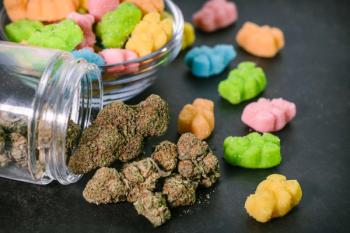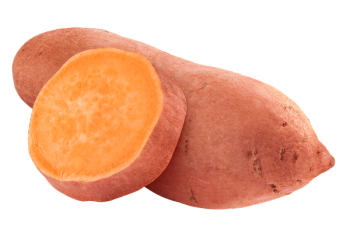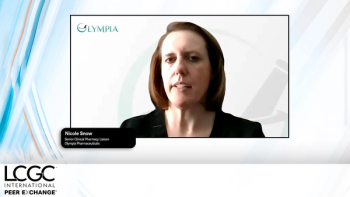
E-Separation Solutions
- E-Separation Solutions-10-20-2009
- Volume 0
- Issue 0
HPLC/UHPLC
High performance liquid chromatography (HPLC) continues to be a workhorse technique in analytical laboratories, and ultrahigh-pressure liquid chromatography (UHPLC) is becoming a viable option for chemists looking to decrease solvent use and achieve higher resolution in a shorter time. Participants in this discussion are Roy Eksteen of Tosoh Bioscience LLC, Michael McGinley of Phenomenex, Inc., and Uwe D. Neue of Waters Corporation.
High performance liquid chromatography (HPLC) continues to be a workhorse technique in analytical laboratories, and ultrahigh-pressure liquid chromatography (UHPLC) is becoming a viable option for chemists looking to decrease solvent use and achieve higher resolution in a shorter time. Participants in this discussion are Roy Eksteen of Tosoh Bioscience LLC and Michael McGinley of Phenomenex, Inc.
Are there any new trends in media or instrumentation for HPLC and particularly UHPLC?
Eksteen:Most producers of packing materials have now introduced sub-2-µm particles, while also, additional porous shell particles have become commercially available. Which particle type is best will be determined by the number of plates that can be generated per unit pressure per unit time. Maybe even more important, however, has been the stream of new bonded phases that extend the reach of UHPLC beyond reversed-phase packings.
McGinley:The biggest trend in HPLC recently has been the introduction of materials with core-shell morphologies that deliver “UHPLC-level performance” at standard HPLC pressures. The introduction of such materials by several vendors has allowed users with standard HPLC systems to develop “ultrahigh” speed and efficiency methods with simple modifications to their existing HPLC systems.
What is the latest word on the acetonitrile shortage? Has the outlook changed at all in recent weeks?
Eksteen:The crisis may be abating, but it is not over yet with prices approximately $75/L for a 4-L quantity of gradient-grade quality.
McGinley:Short term it appears that the acetonitrile shortage has eased and that prices have fallen to 2–4x preshortage prices. However, in conversations with several experts in the field, they suggest that it is likely that shortages will return in the near future. The cause for future shortages is related to a permanent decrease in the global supply of acetonitrile due to process changes in acronitrile production plants that has increased production yields of acronitrile, thereby reducing acetonitrile yields (acetonitrile is a byproduct of acronitrile production).
What are some areas or applications in which HPLC or UHPLC will become increasingly important?
Eksteen:In recent years, complex separations such as glycan analysis have become within reach because of the development of UHPLC systems and smaller particles. This has already resulted in dedicated sub-2-µm hydrophilic interaction chromatography (HILIC) columns. Without doubt, additional non-reversed-phase modes of separation will follow, allowing further progress in solving complex biochemical separation problems.
McGinley:As mentioned in previous LCGC surveys, food safety and raw ingredient testing is continuing to grow due to multiple adverse health incidents with food and generic pharmaceutical manufacturing. Another trend has been the movement of gas chromatography (GC)-based clinical and environmental assays to LC–MS methods to take advantage of the sensitivity that LC–MS can potentially deliver.
How has the commercialization of UHPLC affected HPLC’s range of use?
Eksteen:When in the market for a new instrument or when replacing an old one, one will be hard-pressed not to purchase UHPLC-type equipment, whether the added pressure capability will be used to the fullest extent or not. Although more expensive, in the current economic climate, pricing of UHPLC systems has come down somewhat, which has made it even harder for the few remaining HPLC instrument manufacturers to sell their systems at profitable margins.
McGinley:Many global companies have been faced with the dilemma of how to transfer UHPLC developed methods to standard HPLC systems at other sites. This method portability issue as well as the cost of replacing existing HPLC’s in a large company has likely been the major reason for the slow adoption of UHPLC globally. Now with the introduction of core-shell based HPLC columns that deliver “ultra” high performance for all HPLC systems, there really is no need to replace a well operating HPLC system to get better performance.
What are the biggest stumbling blocks that users face in transferring a method from HPLC to UHPLC?
Eksteen:Suppressing the desire to complete the separation before injecting the sample.
McGinley:When one is moving a method to UHPLC methods, the biggest issue that often arises is managing expectations on how much a method can be shortened. Retention time reductions of 2–5x are likely, however, not all methods can be shortened 10–20-fold like some HPLC manufacturers would have you believe. As mentioned in earlier questions, the more difficult challenge is transferring a UHPLC method across a global company to run on existing HPLC systems.
If you are interested in participating in any upcoming Technology Forums please contact Group Technical Editor
Newsletter
Join the global community of analytical scientists who trust LCGC for insights on the latest techniques, trends, and expert solutions in chromatography.





